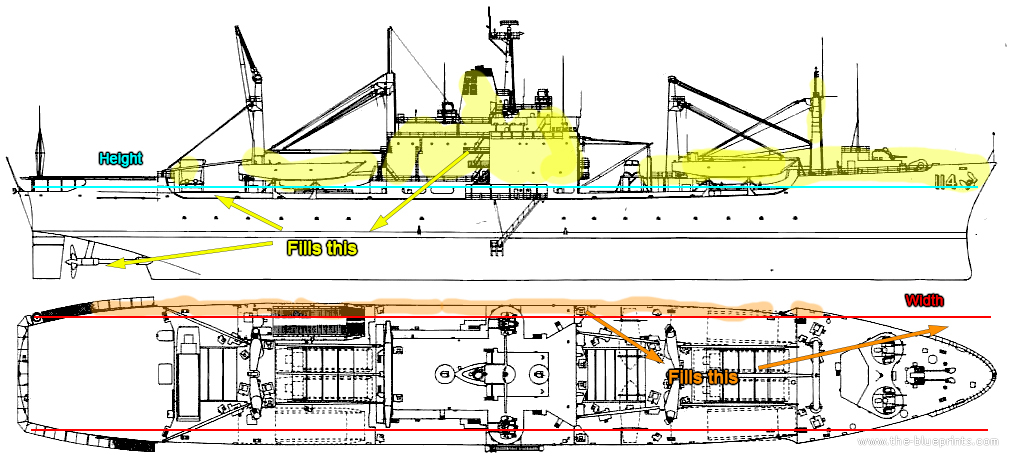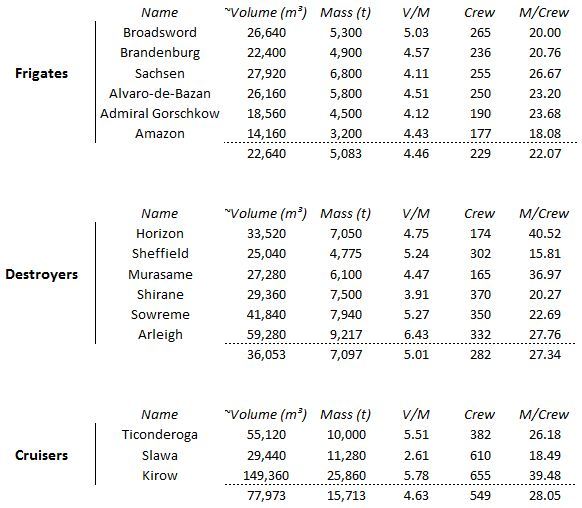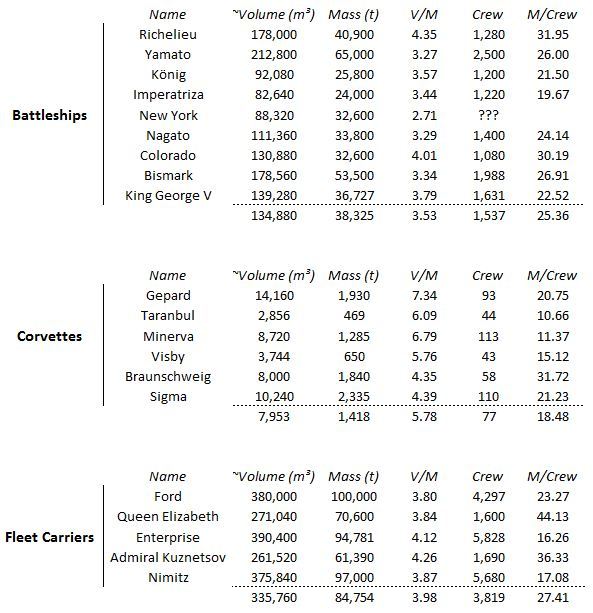In the past I have made several approaches towards trying to figure out how big Aurora ships actually are. Either I converted the ship mass coming from Aurora, or I took some given diameters from other sources, and tried to come up with mass. Nearly all these calculations were pretty ad-hoc though, except maybe for one time where I tried to find the actual thickness of armor (in cm) for certain ship sizes, as it mattered for calculating the radiation penetration.
However, I never sat down and really dealt with this core issue that was floating over the horizon, and that is to figure out a good estimate of a volume to mass ratio, so when you know either of the two, you can also pretty much know the other to some degree of accuracy. This matters a lot for me to know, but is obviously just a role playing issue where you would need it to fill your imagination, or maybe also sometimes if one wants to import ships from franchises that only give one or the other number.
So since Aurora is basically 100% inspired by naval warfare and their ships, I figured that I could just compare their volume and mass data, and did some research. The estimations I did in the past on this were always just based of a single design mostly (Nimitz aircraft carrier for example), rather than a greater comparison chart. This time I also tried to be as accurate as possible, as getting the volume can be quite a mystery for anything that is shaped rather organically such as ships.
The following chart has thus a good degree of error left that comes from that I had to basically guess how much space a certain design would fill if reduced to cuboid object. This was done by cutting down the width and height of any ship I had in a way so that you could imagine the "overflow" beyond that line to fit in exactly with the gaps that still were inside those new borders. Quick concept illustration (wouldn't agree on accuracy here):

There are two substantial weaknesses resulting from this method.
1. Most notable is that the volume may vary quite a bit due to that I never had any data on the real height of any of the ships. This is because sea ships get measured only by their draught, so I only had the water line to work with. Since the ratio between this water line and the rest of the design was nearly never obvious, I had to pretty much guess the remaining height. To make the error source uniform at least, I went with exact factor 2 for the 'effective cuboid height', as this seems to match many ships, just like you can also see in the picture above. (..which I just randomly drew from the internet btw.)
I would like to think that any exception to this rule gets evened out by the amount of entries that I did, so the error vanishes in the mass to a good level. For any singular ship entry I would expect as much as +/- 25% volume error from this source alone though.
2. Figuring out volume to mass ratios in this way is ignorant of the difference that result from better conservation of volume the greater the ship is. For example, if you coat a 5km³ and a 40km³ ship with 30mm armor, the 40km³ won't weight 8 times as the 5km³ one anymore, because it doesn't have as much surface that needs to be covered with such armor in comparison to its total volume. So in short, you can expect larger ships to get higher V/M (volume to mass ratios), as mass should not grow as fast as the space it occupies.
I however found that this error is marginal for the naval ships at least, first because they do not differ in size too extremely, and second, well, the data actually shows the opposite: Small ships as corvettes seem pretty light for their dimensions, while battleships and carriers appear to be especially heavy. I could think that this is due to the fact that they increase armor disproportionally to make the larger and more expensive ships extra save and "not as expendable" as smaller ones, but I am really not sure what makes them so heavy. Maybe there is some hidden factor that causes this, and if you know it or have some idea, I would certainly like to hear this.
So here come the charts:


Everything has a sub total to see the difference in design groups, but the grand total for the mass to volume factor is 4.57m³ per t of weight.
The ton by man ratio was not actually my objective here, and I just included it, well, because I looked at data anyway. It seemed unfair to me to throw it together, as it really is a part of design mission. However, I saw that most of the ships actually fell in a pretty unison line with this (only 2-3 extremes that didn't match), so I figured a total average could be made too as some sort of reference. It came out as 24.78 tons per man here; quite a bit more than you usually have in Aurora. (I always called Aurora ships overpopulated, and here is the evidence

.
~ This is not even counting the hypothetical extra equipment that water and oxygen refinement would need on an actual spaceship, as well as some extra redundancy in the support barren empty space)
Nothing against the amazing 5000 tons per man that you get in all Federation ships, or still somewhat high 290 tons per man that I found when taking apart the Warhammer 40k dictator cruiser.(and those are described as having extremely uncushy pressed military quarters which actually reduce morale --- I guess engines for star ships may add way more mass than they take on any conventional ship,... or the writers did not think this through as much

)